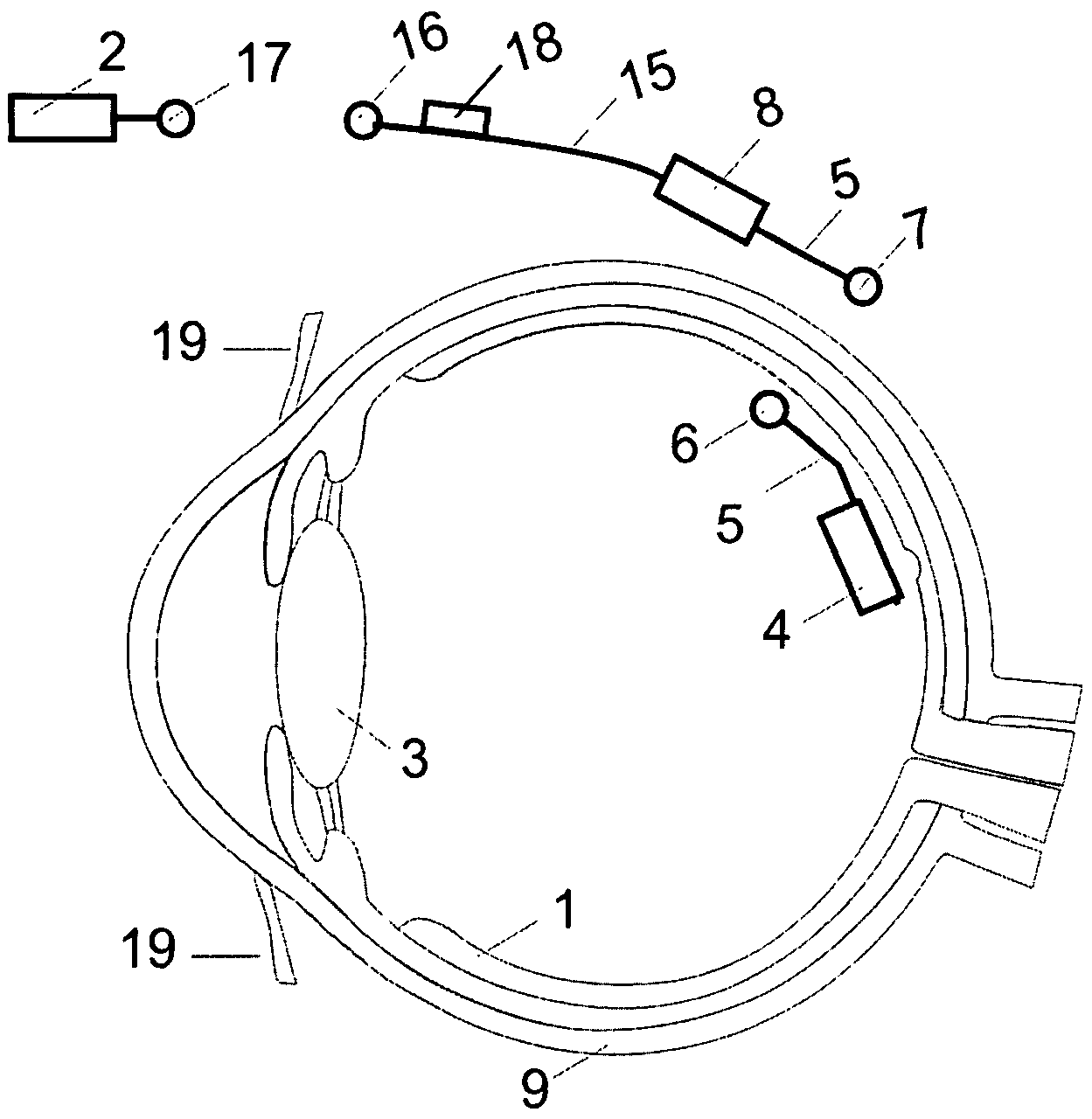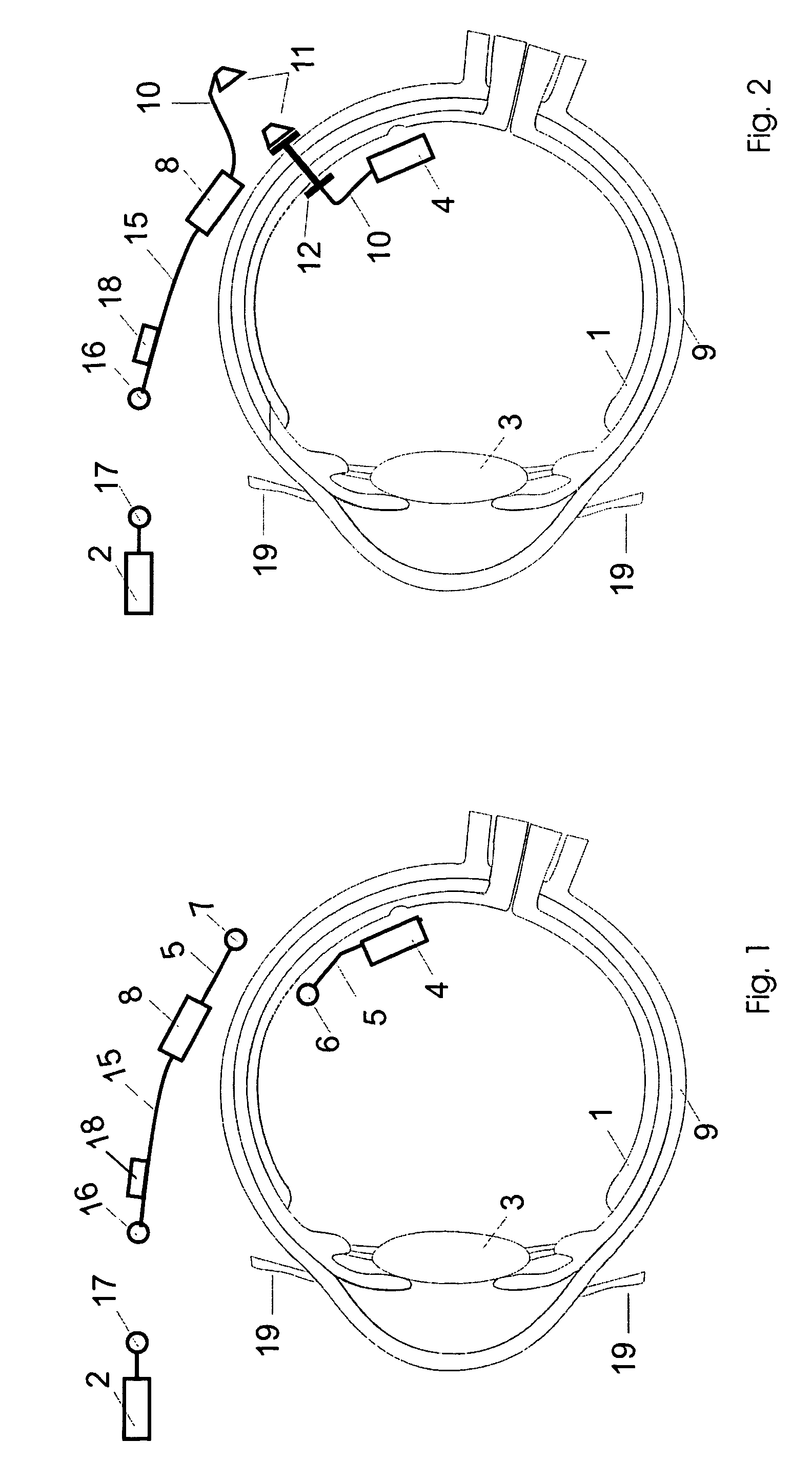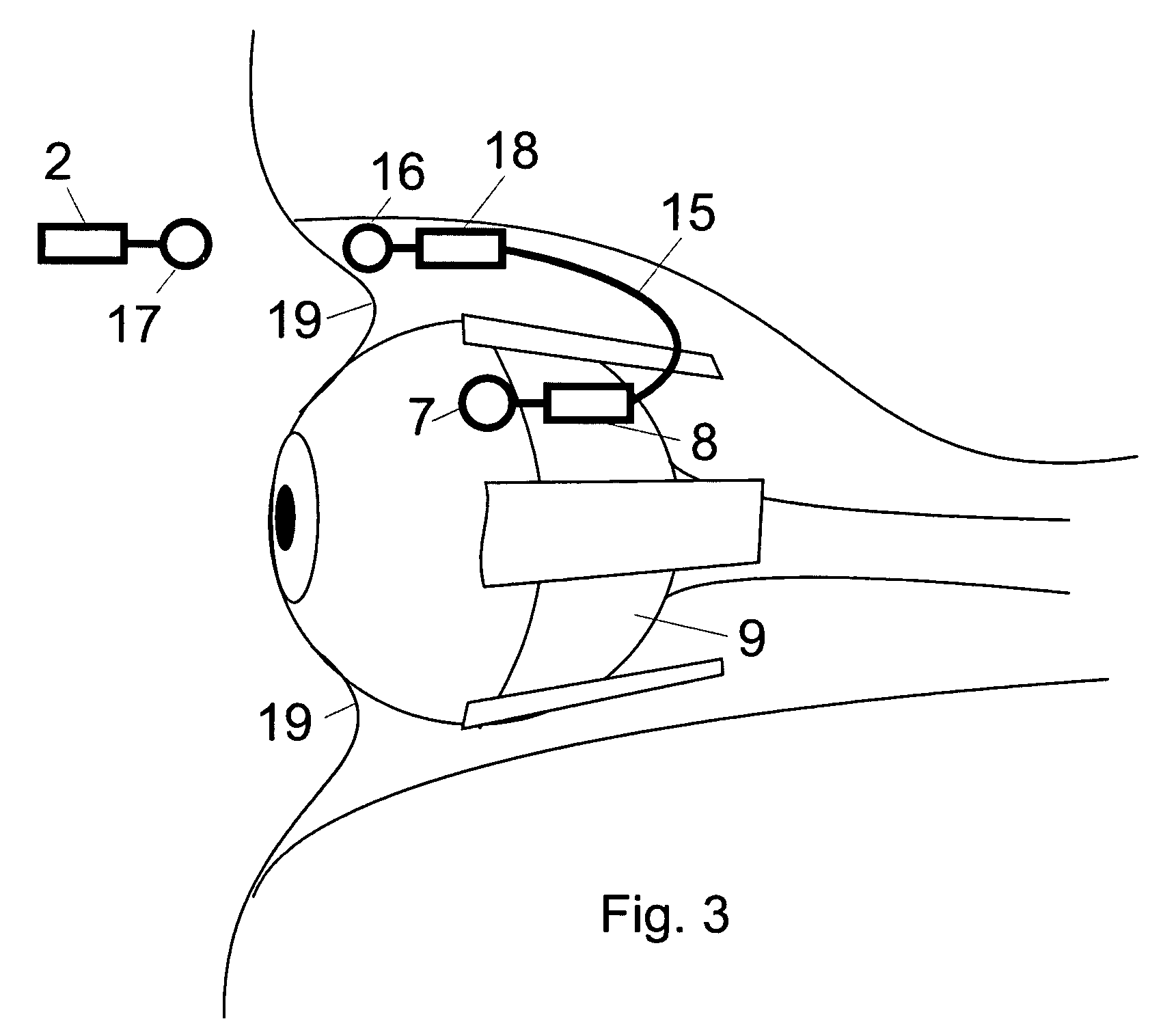Retinal implant with improved implantation and working properties
a technology of retinal implants and working properties, applied in the field of retinal implants, can solve the problems of increasing the risk of future pathological tissue changes, increasing the difficulty of surgical interventions, and difficulty in re-explantation,
- Summary
- Abstract
- Description
- Claims
- Application Information
AI Technical Summary
Benefits of technology
Problems solved by technology
Method used
Image
Examples
Embodiment Construction
[0015]FIG. 1 represents a retinal implant for patients having a degenerative disease of the retina 1, in which the functional unit(EPF) 2 present outside the body is positioned in the head region (e.g. on the side of a spectacle frame with normal spectacle function), in such a way that the optical beam path between viewed objects and the retina 1 is impaired neither by functional units directly in front of the eye nor by functional units in the anterior eye segment, including the intraocular lens (IOL) 3, and in such a way that, in particular, patients can thereby use their residual vision which may still remain (e.g. in the extrafoveal field of view in the case of macular degeneration), in addition to the implant function.
[0016]In a retinal implant according to the invention, the functional unit IGF 4 positioned inside the vitreous chamber is designed as a microcontact foil having associated microelectronics, a microcable S and at least one coil 6, and is fastened close to the reti...
PUM
 Login to View More
Login to View More Abstract
Description
Claims
Application Information
 Login to View More
Login to View More - R&D
- Intellectual Property
- Life Sciences
- Materials
- Tech Scout
- Unparalleled Data Quality
- Higher Quality Content
- 60% Fewer Hallucinations
Browse by: Latest US Patents, China's latest patents, Technical Efficacy Thesaurus, Application Domain, Technology Topic, Popular Technical Reports.
© 2025 PatSnap. All rights reserved.Legal|Privacy policy|Modern Slavery Act Transparency Statement|Sitemap|About US| Contact US: help@patsnap.com



